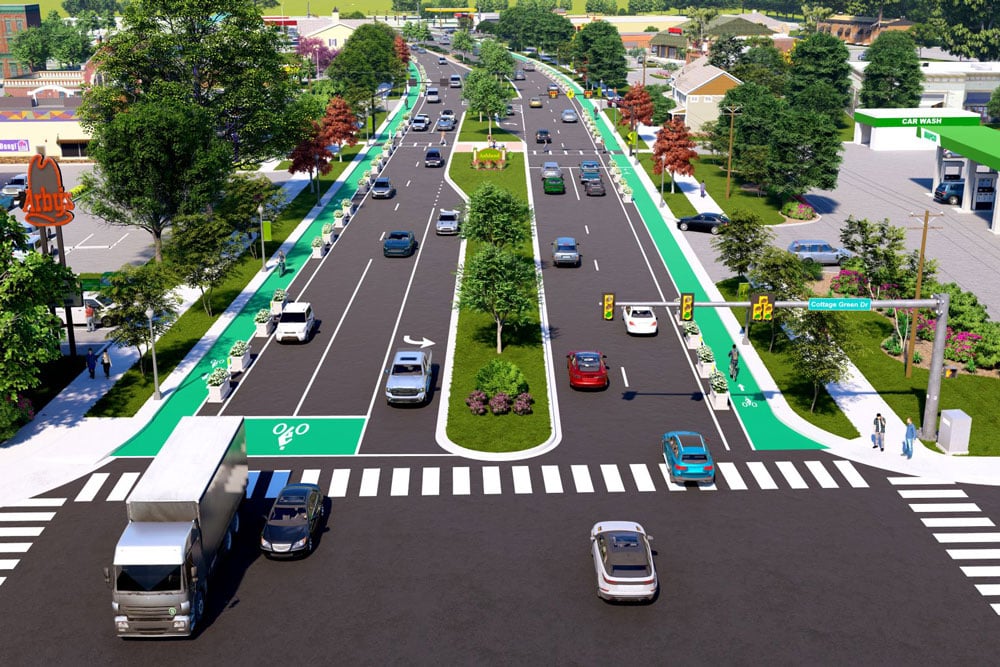The Big Picture of Regulating Mobility

Our mobility community is a complicated collection of dozens of specialties to make sure parking and transportation function efficiently. Our years of practice, study, and planning confirm that all the pieces matter and each component relates to the others. Our focus is not limited to parking. We now know that parking has a direct impact on pedestrian traffic, public transportation, alternative modes of personal transportation, and public infrastructure. However, for these multiple disciplines to come together, comprehensive legislation is necessary to attempt to achieve seamless regulation. The planning trend toward Complete Streets is an example of a qualitative approach to comprehensive legislation of the “big picture” of mobility.
In March, the Federal Highway Administration (FHWA) released a report to Congress detailing the agency’s commitment to advance widespread implementation of the Complete Streets design model. Complete Streets is a focus on design, construction, and operation of safe roads and on countermeasures that encourage safe speeds. According to FHWA, the guiding principle behind Complete Streets is to help improve safety and accessibility for all users. FHWA published this guideline as a response to a report accompanying the Departments of Transportation, and Housing and Urban Development, and Related Agencies Appropriations Bill of 2021 which stated that FHWA should “review its current policies, rules, and procedures to determine their impact on safety for road users.” The report identifies five areas that will inform FHWA as it moves ahead with its efforts to increase the proportion of federally funded transportation projects that are routinely planned, designed, built and operated as Complete Streets:
- Improve data collection and analysis to advance safety for all users.
- Support rigorous safety assessment during project development and design to help prioritize safety outcomes across all project types.
- Accelerate adoption of standards and guidance that promote safety and accessibility for all users and support innovation in design.
- Reinforce the primacy of safety for all users in the interpretation of design standards, guidelines, and project review processes.
- Make Complete Streets FHWA’s default approach for funding and designing non-access-controlled roadways.
By making Complete Streets the default approach, the policy can be implemented to improve the safety of almost 70% of roads that are used by a variety of users in primarily urban areas and small towns. The goal of the Complete Streets policy shift is described by Deputy Federal Highway Administrator Stephanie Pollack: “FHWA will play a leadership role in providing an equitable and safe transportation network for travelers of all ages and abilities, including vulnerable road users and those from underserved communities that have faced historic disinvestment.” Safety is advanced in the Complete Street policy by focusing on the design, construction, and operation of safe roads and on countermeasures that encourage safe speeds, making it a key component of FHWA’s implementation of the U.S. Department of Transportation’s National Roadway Safety Strategy.
To implement FHWA’s Complete Streets policy, important changes in regulation and financial incentives must occur. First, the guidelines address needed legislative amendments and revisions to implement the comprehensive guidelines. A partial list of the laws that require revision, on the federal level alone, include:
- 49 U.S.C. 5303: Metropolitan transportation Planning
- 49 U.S.C. Subtitle IX: Multimodal Freight
- 23 U.S.C. 134 Metropolitan Transportation Planning
- 23 U.S.C. 217 (g): Bicycle Transportation and Pedestrian Walkways: Planning and Design
FHWA also recommends financial incentives for states and local governments to implement Complete Streets planning. For example, the recent bi-partisan infrastructure bill includes a requirement that states and metropolitan planning organizations use at least 2.5% of their planning funding on activities related to Complete Streets or travel on foot, by bike, in a vehicle or using public transit.
Parking and mobility professionals are encouraged to review FHWA’s “Moving to a Complete Streets Design Model: A Report to Congress on Opportunities and Challenges” in full available for download here.


